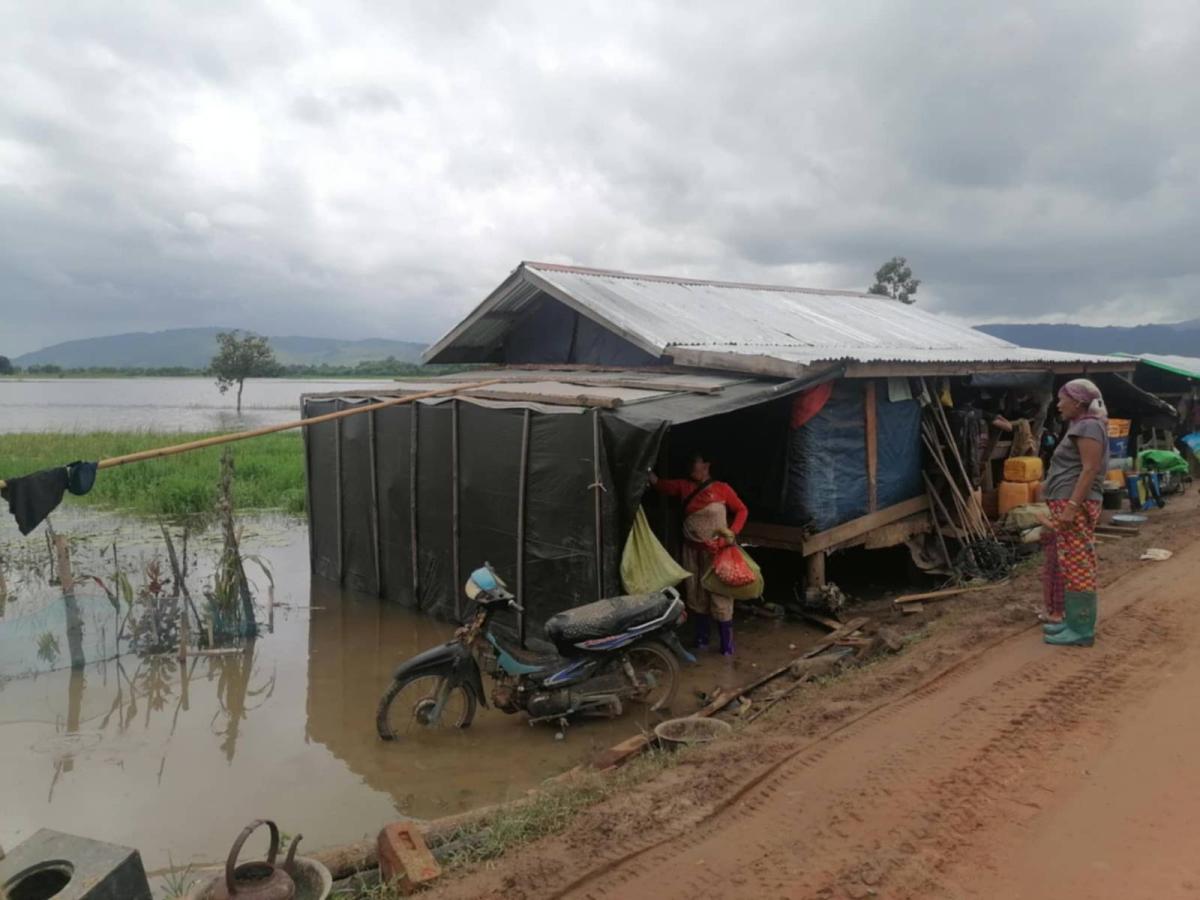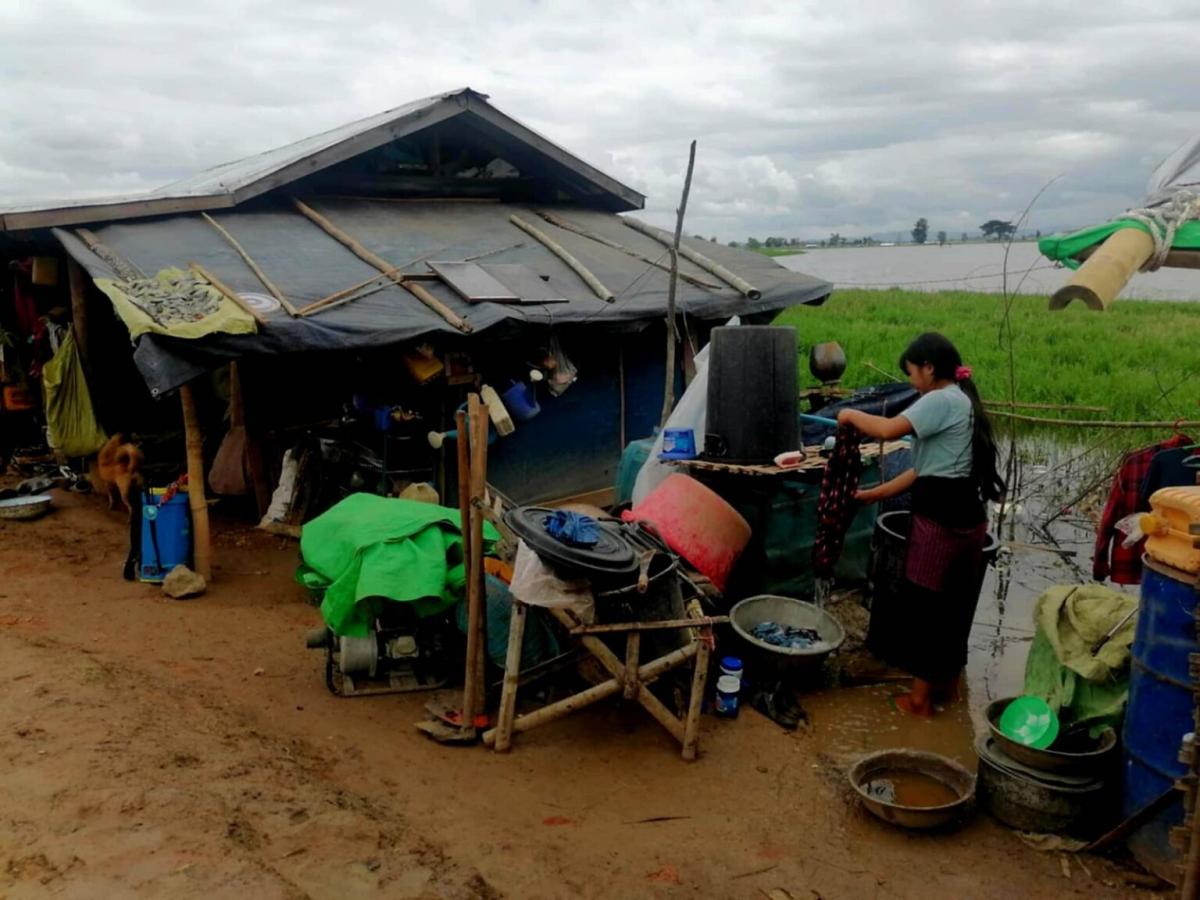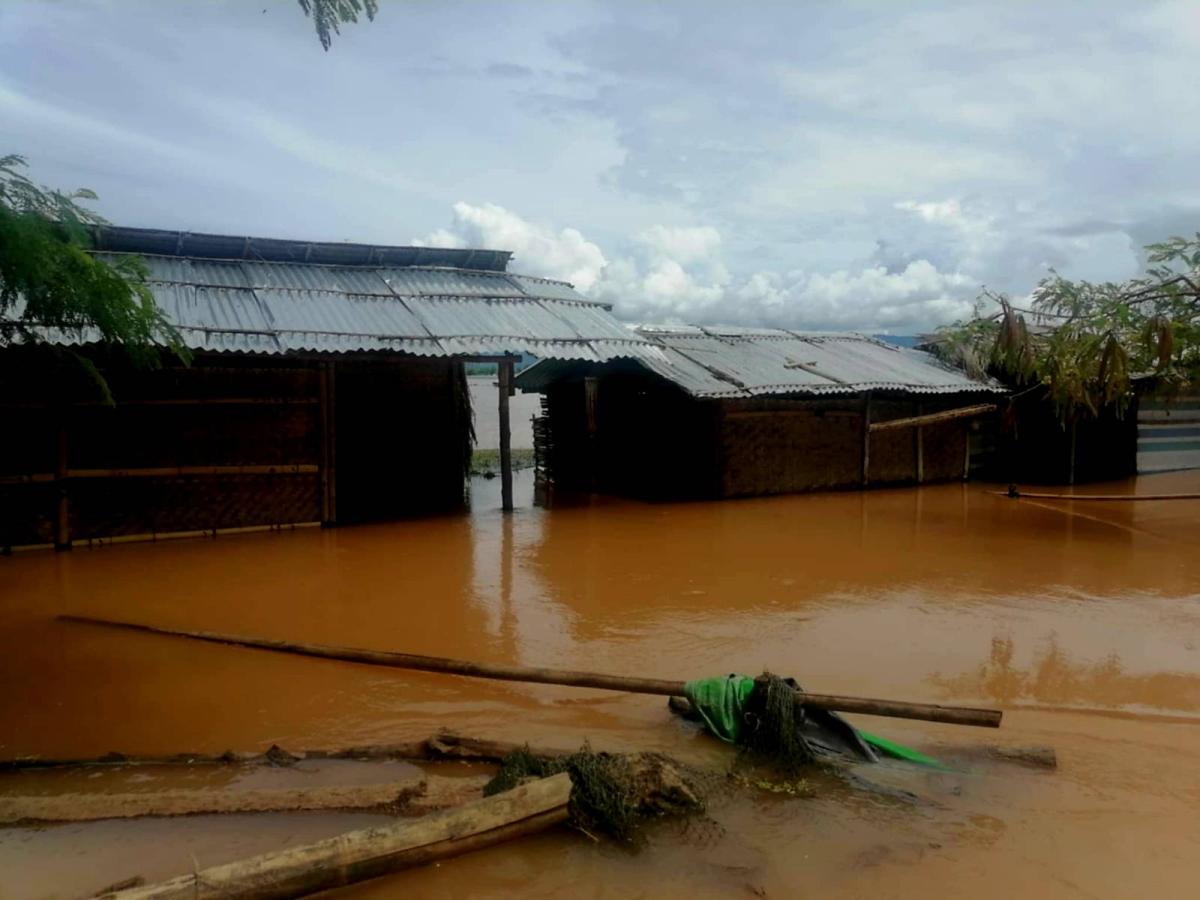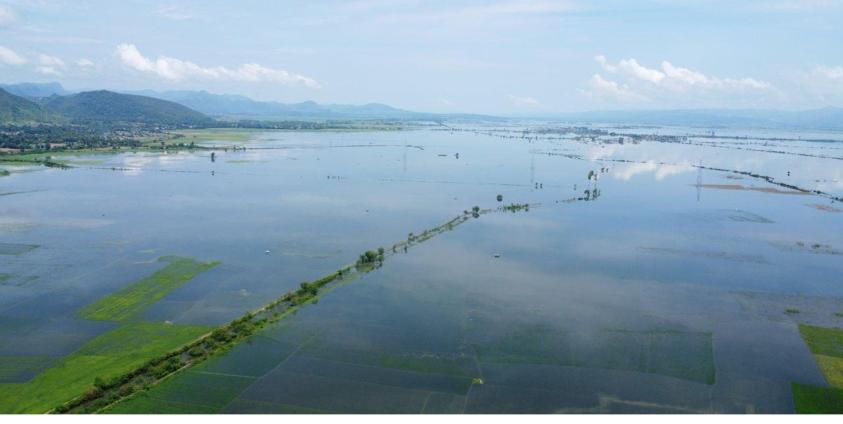Daw Mu Tar was delighted to see her paddy field overflowing with ripe rice, with everything ready for harvest, then the devastating Typhoon Yagi hit Myanmar.
Daw Mu Tar was displaced from her home by fighting and was living in Nawnghkaik camp for internally displaced people (IDPs), on the banks of the Balu Chaung River in Pekon Township.
She had invested all her borrowed money, sweat, and strength into the five acres of paddy fields she planted there, in an effort to escape a life of dependence on others.
She said: “I invested around four million MMK in those paddy fields. The quality of the rice across all five acres was excellent, and I estimated I would harvest a total of 300 bags of rice.”
 However, after Typhoon Yagi struck, the paddy fields that Daw Mu Tar had nurtured with so much care were ruined. All her hopes and dreams were shattered she said, as she gazed sadly at the still-submerged fields. Though the floodwaters had receded, her paddy fields along the Balu Chaung River remained inundated.
However, after Typhoon Yagi struck, the paddy fields that Daw Mu Tar had nurtured with so much care were ruined. All her hopes and dreams were shattered she said, as she gazed sadly at the still-submerged fields. Though the floodwaters had receded, her paddy fields along the Balu Chaung River remained inundated.
She said: “I did the calculation. For our family of four, 20 bags of rice per year is enough. I estimated that 300 bags of rice would be produced from the five acres of paddy fields. In other words, one harvest would provide enough rice to sustain our family for 10 to 15 years.”
Typhoon Yagi, which originated in the South China Sea and briefly reached super typhoon status, weakened significantly after making landfall. The tail end of the typhoon crossed Myanmar on 10 September 2024, bringing heavy rains that triggered severe flash floods in 54 townships across Karenni State, Naypyidaw Council Territory, Bago Region, Mandalay Region, Mon State, Karen State, Shan State, and Ayeyarwady Region.
 Flash floods triggered by Yagi killed hundreds of people across Myanmar and affected 631,000 individuals, according to a World Food Programme (WFP) announcement on 18 September.
Flash floods triggered by Yagi killed hundreds of people across Myanmar and affected 631,000 individuals, according to a World Food Programme (WFP) announcement on 18 September.
The flooding also destroyed around 750,000 acres of paddy fields as well as other crops and plantations. Amongst these were the five acres of paddy field belonging to Daw Mu Tar and her family.
Daw Mu Tar is 30 years old and she used to live with her husband and two children on the border of Shan State and Karenni State. But, in 2022 after fighting in her village and the surrounding areas Daw Mu Tar and her family were forced to flee for their own safety to the western part of Pekon Township, in southern Shan State.
But, there were few employment opportunities and the family did not really know anyone else there. So, they moved to the Nawnghkaik IDP camp, on the banks of the Balu Chaung River in the south of Pekon Township. It was close to the family home they had abandoned and there were friends from their village staying there.
There are about 270 IDP families living in the Nawnghkaik IDP camp.
Whilst at the camp Daw Mu Tar's family had to rely mainly on the support of donors to survive. So the family, along with some other IDPs at the camp who were also unhappy at having to rely on donors, decided at the beginning of the last planting season to cultivate rice on farmland next to the Balu Chaung River.
Daw Mu Tar's family did not have enough savings to cultivate their five acres, so they borrowed money to do so. Now, they are unable to repay their debts and are struggling to cover their children's school fees.
She said: "The loss we experienced was enormous. Farming is our only livelihood, and now it's all gone. We have nothing left. To make matters worse, we are already in debt. The losses caused by Yagi are too much for us to bear.”
 Not only did the family lose all their rice crop to Typhoon Yagi, it also destroyed the two shelters in the IDP camp where they lived.
Not only did the family lose all their rice crop to Typhoon Yagi, it also destroyed the two shelters in the IDP camp where they lived.
The first shelter the family built was close to the Balu Chaung River but as the area around the shelter would flood when the river’s waters rose the family decided to build another shelter on higher ground in the IDP camp so that they could live there when the water levels rose.
The second shelter was better constructed with a tin roof and woven bamboo walls. It cost around 2 million MMK to build in 2022.
Daw Mu Tar explained: “During the flooding, both our huts were submerged and then washed away. We lost both of them. We have never experienced such a nightmarish flood in our lives.”
The camp where she was staying was not the only IDP camp in the area to be devastated by Typhoon Yagi. A total of 16 IDP camps and 54 villages on the Shan-Karenni border suffered similar levels of destruction.
According to an announcement by the Karenni State Interim Executive Council (IEC), the provisional revolutionary government of Karenni State, the flooding caused by Typhoon Yagi destroyed over 10,000 acres of agricultural land, affected nearly 2,000 households and impacted around 150,000 people.
Though they had become accustomed to living in Nawnghkaik IDP camp, Daw Mu Tar's family, along with other IDPs, decided to return to their home village after the flooding. They felt they had no choice but to take a risk and return, despite the danger of landmines.
Junta troops were stationed in their village for over a year and they planted landmines all around the village that yet have to be cleared. Also, before they left, the junta soldiers burnt down 200 of the village's 270 houses.
Currently, four or five families from the village are living together in each of the houses that remain standing. Previously, the villagers could cultivate 500 acres of paddy fields in the village, but that is no longer possible because the flood has destroyed them.
U Banyar, Secretary No. 2 of the Karenni State Interim Executive Council (IEC), the revolutionary provisional government of Karenni State, admitted that efforts to help IDPs affected by the flooding has been insufficient.
He said: “Our priority is to assist the IDPs affected by the floods. However, in some areas, we were only able to provide support for their relocation. We are not yet able to address the large-scale situation where entire villages need to be rebuilt. For such scenarios, there are also steps that need to be discussed with township-level organisations.”
Daw Mu Tar's family had hoped to be in a situation where they no longer had to worry about their livelihood after having been IDPs for three years. But instead, Typhoon Yagi added to their hardships.
Khun Ajay, a 35-year-old man from Daw Mu Tar’s village said: “Every time I think about how we will manage for sustenance next summer, I become very worried. What if the junta columns return to our village? If that happens, our hope of farming again will be completely shattered. If so, who will we depend on, and how will we make a living? These questions are very stressful.”
Artillery shelling by the junta and the threats of landmines are dangers that weigh heavily on all the villagers. There is also the constant fear that junta soldiers will return to the village.
Despite the many hardships she faces Daw Mu Tar does not want to be dependent on others and she is hoping to be able to plant more rice paddy in the summer. But, until she can harvest that paddy in 2025 she and the other villagers in her village will have to rely on donors to sustain them.







